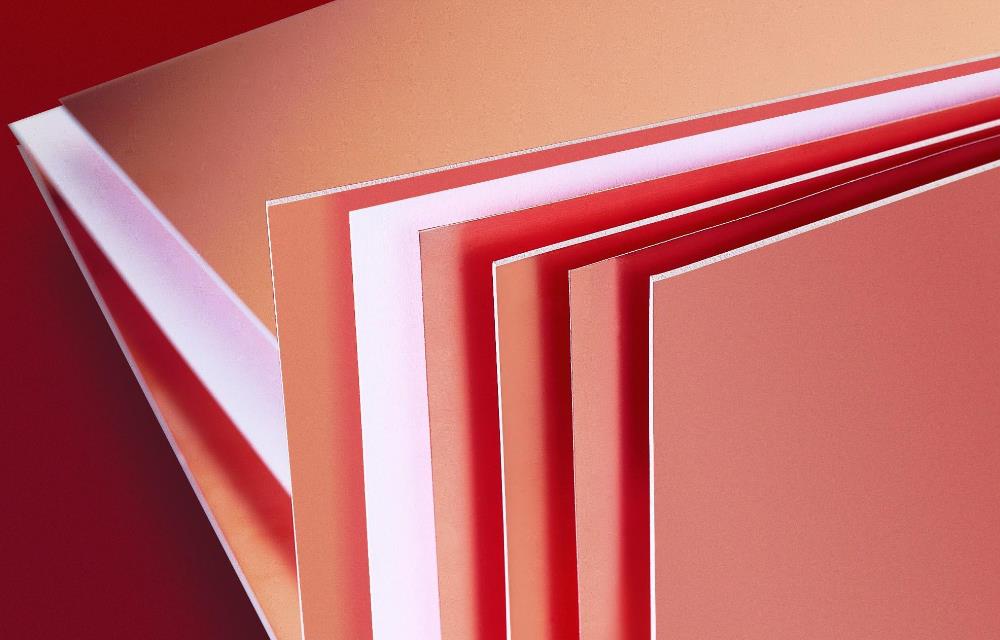General PCB main substrate materials can be divided into two categories: rigid substrate materials and flexible substrate materials, rigid substrate materials in the most common is laminates.
Laminates are made of wood pulp paper or glass fiber cloth as reinforcing material, soaked with resin, covered with copper foil on one or both sides, and hot pressed into a product. When it is used in the production of PCB multi-layer boards, it is also called core board (CORE).
The main material used in PCB circuit boards is copper laminate, which can also be called substrate. It is made of wood pulp paper or glass fiber cloth as reinforcing material, impregnated with resin, laminated with copper foil on one or both sides, and hot pressed into a product. Laminates available in the market today can be divided into the following categories: paper substrates, glass fiber cloth substrates, synthetic fiber cloth substrates, non-woven substrates and composite substrates.
The substrate material is an insulating layer composed of polymer synthetic resin and reinforcement. The surface of the substrate is covered with a layer of pure copper foil with high electrical conductivity and good solderability, and the common thickness is 35 ~ 50/mm. The laminates with copper foil on one side of the substrate are called single-sided laminates, and the laminates with copper foil on both sides of the substrate are called double-sided laminates. The ability of the copper foil to be firmly coated on the substrate is realized by the adhesive. There are three commonly used thicknesses of laminates: 1.0 mm, 1.5 mm and 2.0 mm.
Currently, the laminates available in the market can be divided into the following categories in terms of pcb substrate: paper substrate, glass fiber cloth substrate, synthetic fiber cloth substrate, non-woven substrate, and composite substrate.

Substrate Materials - Laminates
Currently commonly used PCB substrate materials
1.G-10 and G-11 Laminates
They are epoxy fiberglass laminates that do not contain flame retardants and can be drilled with a drill press, but punching is not allowed. The performance of G-10 is very similar to FR-4 laminates, while G-11 can withstand higher operating temperatures.
2.fr-2, fr-3, fr-4, fr-5, and FR-6 laminates (they all contain flame retardants and are thus named “FR”)
FR-2: Its performance is similar to that of XXXPC, it is a paper-based phenolic resin laminate, and it can only be punched with a punching machine, but not drilled with a drilling machine.
FR-3: It is a paper-based epoxy laminate that can be punched at room temperature.
FR-4: It is an epoxy glass fiber laminate, which is very similar to the performance of G-1 laminate, has good electrical performance and processing characteristics, and has a desirable performance-price ratio, and can be made into multi-layer boards. It is widely used in industrial products.
FR-5: It has similar performance to FR-4, but maintains good strength and electrical performance at higher temperatures.
FR-6: It is polyester resin fiberglass laminate.
Among the above layer materials, the commonly used G-10 and FR-4 are suitable for multi-layer circuit board printing, relatively inexpensive, and can be used in the drilling machine drilling process, easy to realize automated production.
3.Non-epoxy resin circuit boards. Commonly used non-epoxy resin layer circuit boards have the following types:
Polyimide resin fiberglass circuit boards
It can be used as rigid or flexible circuit substrate materials,its strength and stability at high temperatures are better than FR-4 circuit boards, commonly used in highly reliable military products.
4.GX and GT Laminates
They are polytetrafluoroethylene glass fiber circuit boards,the dielectric performance of these materials can be controlled,can be used in products with stringent dielectric constant requirements, and the dielectric performance of GX is better than GT, can be used in high-frequency circuit boards.
5.XXXP and XXXPC Laminates
They are phenolic resin paper-based circuit boards, can only be punched can not be drilled, these laminates are only used for single-sided and double-sided circuit board printing, and can not be used as raw materials for multi-layer printed circuit boards.Because of its cheap price,so they are widely used as circuit board materials in civilian electronic products.
China PCB substrate material standards: China's national standards for substrate materials GB/t4721-47221992 and gb4723-4725-1992, Taiwan copper-clad foil standard is the standard SSP, is based on the Japanese JIS standards, issued in 1983.
International PCB substrate material standards: Japan's JIS standard, the United States ASTM, NEMA, MIL, IPC, ANSI, UL standards, the United Kingdom B standards, Germany DIN, VDE standards, France NFC, UTE standards, CSA standards Canada, Australia AS standards, the original FOCT Soviet Union standards, IEC international standards.